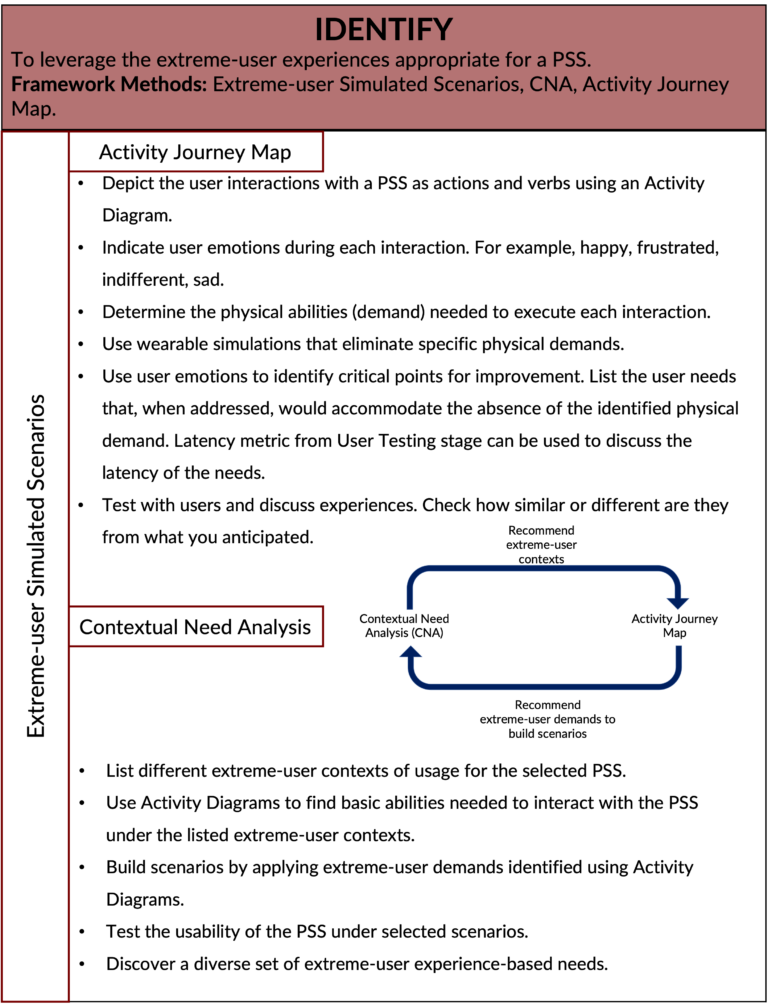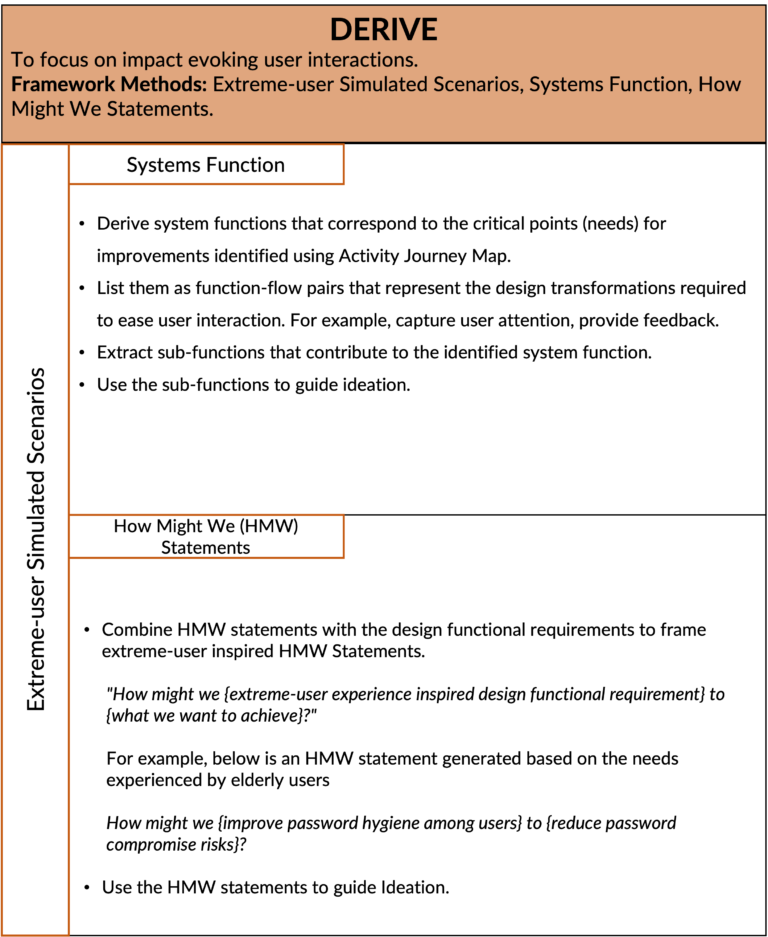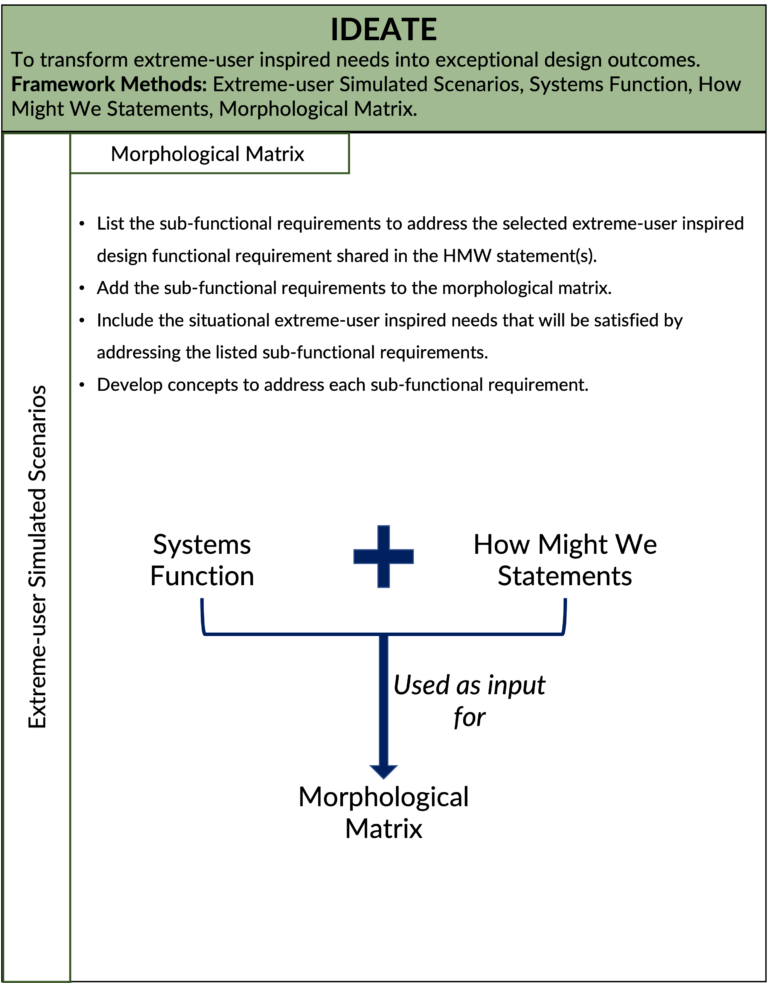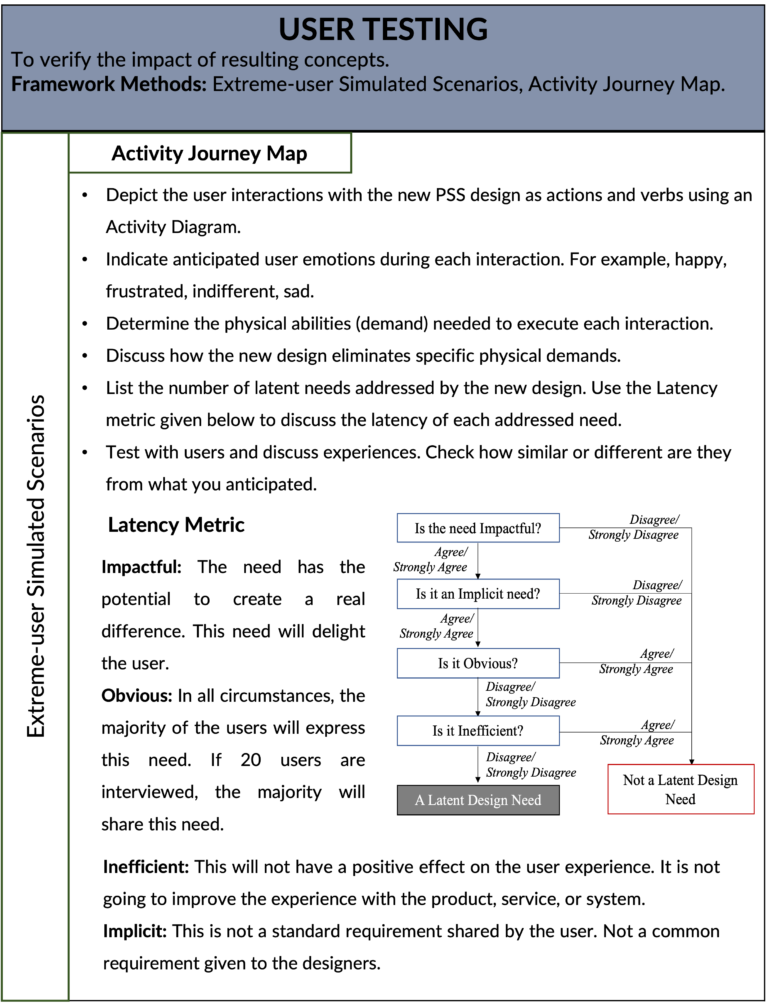Extreme-User Experience Framework
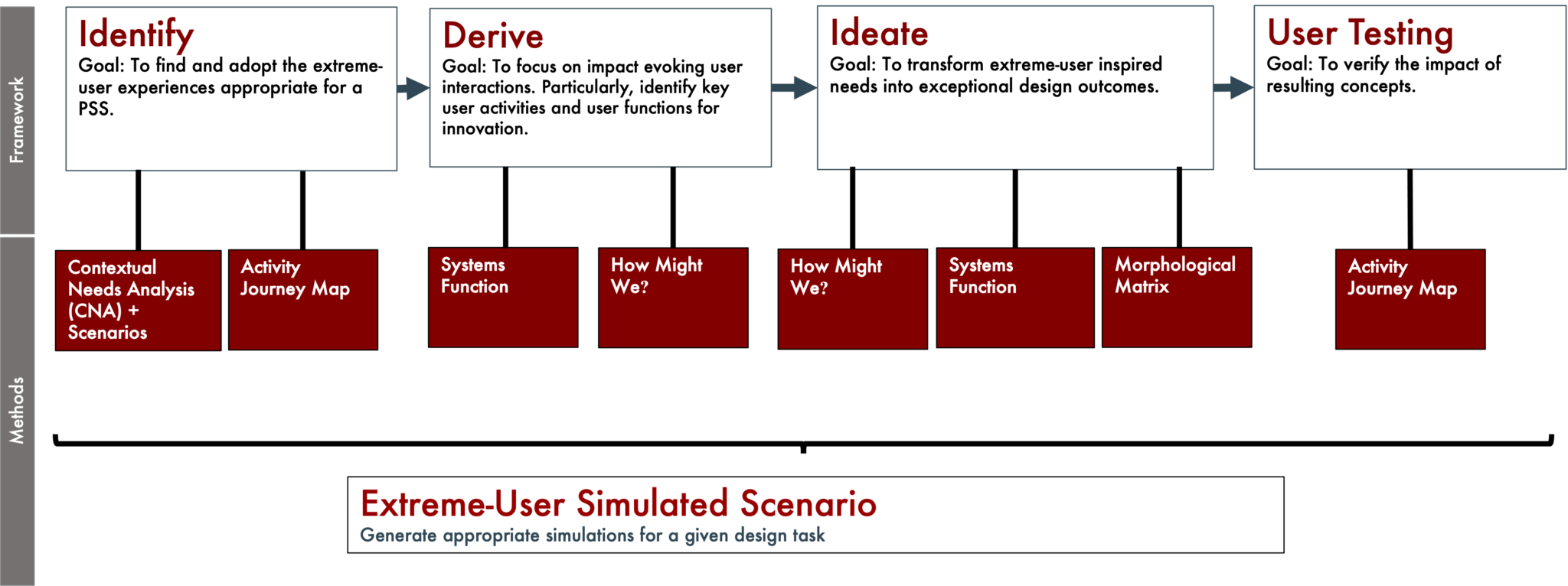
While concepts like inclusive design and universal design have been studied for decades, design researchers have recently started to recognise the potential of extreme-user needs in addressing the latent needs among the general population users.My research built a systematic application framework to adopt extreme-user experiences alongside the 4D’s Design Innovation (DI) process model shared below.

Who are extreme-users? Extreme-user populations comprise the group of users whose needs are different from that of the general population of users of a product, service, or system (PSS). They experience needs that are latent among the general population and have the potential to inspire design professionals (Liikkanen, 2009; Raviselvam et al., 2019). For example, the older adult users and users with reduced physical or cognitive abilities would be examples of extreme-users for a product that primarily focuses on the mainstream general population users.
What is extreme-user experience? The Cambridge English Dictionary refers to experience as the process of getting knowledge or skill from doing, seeing, or feeling things (Cambridge University Press, 2021). Extreme-user experiences refer to the process of getting knowledge or skill from doing, seeing, or feeling things inspired by adopting extreme-user perspectives.
The key goal of this research is to understand ways to adopt extreme-user experiences as a tool for user-centric PSS design.
The proposed framework was applied for design innovation and creativity in domains like medical device design, cyber-security and privacy in mobile phone interface, and general education.
- Empathy and Creativity in Design
- Medical Device Design
- Cyber-security and privacy in mobile phone interface
- General education
Research Approach:
This study comprised 80+ participants who participated in three different extreme-user experience workshops. This project was in collaboration with ETCH Empathy (https://www.etch.sg/) and funded by the National Youth Council Singapore (https://www.nyc.gov.sg/en).


Outcomes:
Through this research, I:
- Tested the influence of extreme-user perspectives on designer empathy and creativity.
- Presented a psychology inspired metric to evaluate the Empathic Similarity attained by applying the extreme-user perspectives.


References:
- Raviselvam, Sujithra, Katja Hölttä-Otto, and Kristin L. Wood. “User Extreme Conditions to Enhance Designer Empathy and Creativity: Applications Using Visual Impairment.” ASME 2016 International Design Engineering Technical Conferences and Computers and Information in Engineering Conference. American Society of Mechanical Engineers.
- Raviselvam Sujithra, Sanaei Roozbeh, Lucienne T. Blessing, Katja Hölttä-Otto, and Kristin L. Wood. “Demographic Factors and Their Influence on Designer Creativity and Empathy Evoked through User Extreme Conditions.” ASME 2017 International Design Engineering Technical Conferences and Computers and Information in Engineering Conference. American Society of Mechanical Engineers.
- Poster Presentation: Raviselvam, Sujithra, Karen Sng, and Kristin Wood. “Design Knowledge and Impact on Simulation Induced Creativity and Empathy.” DS86: Proceedings of The Fourth International Conference on Design Creativity, Georgia Institute of Technology, Atlanta, GA, USA. 2016. [Received Best poster award]
- Raviselvam, Sujithra, Hwang Dongwook, Bradley Camburn, Karen Sng, Katja Hölttä-Otto, and Kristin L. Wood. (2021). “Extreme-user Conditions to Enhance Design Creativity and Empathy- Application Using Visual Impairment.” International Journal of Design Creativity and Innovation.
Research Approach:
This work applied extreme-user experiences along the initial stages of the design process to guide students and identify the latent needs for six different medical devices. Activity Diagrams were adopted to systematically identify the extreme-user experiences that could affect user interactions with each medical device.

Outcomes:
Systematic application of extreme-user experiences helped capture the latent design needs in medical device design and demonstrated the potential of extreme-user experiences in changing designers’ perceptions over their design solutions.

References:
- Raviselvam Sujithra, Katja Hölttä-Otto, Kristin L. Wood, Karupppasamy Subburaj (2022) “Systematic Application of Extreme-User Experiences: Impact on the Outcomes of an Undergraduate Medical Device Design Module,” Biomedical Engineering Education (Under review: Minor revisions).
- Raviselvam Sujithra, Katja Hölttä-Otto, Kristin L. Wood, Karupppasamy Subburaj. (2019) “An Extreme User Approach to Identify Latent Needs: Adaptation and Application in Medical Device Design.” ASME 2019 International Design Engineering Technical Conferences and Computers and Information in Engineering Conference. American Society of Mechanical Engineers.
- Raviselvam Sujithra, David Anderson, Katja Hölttä-Otto, “Systematic Framework to Apply Extraordinary User Perspective to Capture Latent Needs Among Ordinary Users.” ASME 2018 International Design Engineering Technical Conferences and Computers and Information in Engineering Conference. American Society of Mechanical Engineers.
Research Approach:
This work studied the privacy and security concerns in mobile phone interfaces by focusing on older adults as extreme-users. This collaboration project comprised with user interviews, ideation with industry experts, and user testing.

Through this project, I tested the impact of presenting situational extreme-user experiences in comparison to direct extreme-user experiences (in this case, elderly users). Morphological matrix method was used to apply situational extreme-user experiences and the personas method was used to apply direct extreme-user experiences.
Situational extreme-user experiences: Refers to getting knowledge or skill from doing, seeing, or feeling things inspired from instances that highlight the similarity in needs experiences by extreme-users and general population users.

Outcomes:
- The concepts derived using the morphological matrix showed that sharing system attributes and corresponding situational extreme-user scenarios could motivate designers to identify creative yet inclusive design solutions. For example, verifying within a social circle was an informally followed way of verifying information among the older adult users in Singapore; presenting this scenario encouraged designers to address the trust concerns among the older adult users. In addition, our expert participants also recommended automated link checkers, which was one of the preferred solutions among the all participant groups. The majority of our user participants from the testing phase conveyed that they would rather be independent than depend on others.
- While the participants in the no prompt group also recommended forced warning, they also shared a greater number of excluding concepts when compared to the remaining two groups. This might not be an ideal outcome if we want to cater to a wider population of users.


Reference:
- Raviselvam, S. (2021). Designing with the Extreme-user Experiences (Doctoral dissertation, Singapore University of Technology and Design).
Research Approach:
This work was part of a project that focussed on improving the pervasiveness of critical and inventive thinking in General Education. I applied my extreme-user experience framework to learn from the extremes. The extremes considered for this study included the COVID-19 situations, special education schools, and homeschooling experiences.
The project engaged 31 international experts and a total of 95 students and 141 teachers from Singapore. The study outcomes highlighted the overlap in needs experienced by the extreme-users and general population users in general education.
Yet to publish the outcomes of this fascinating study. Will soon update this section.



